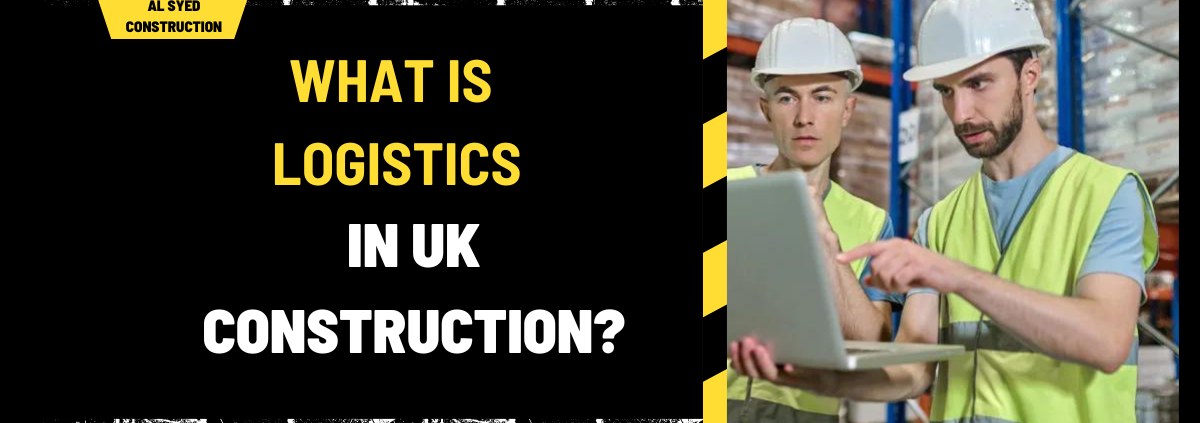What Is Logistics in UK Construction? A Comprehensive Guide
In the realm of construction, logistics is a critical component that influences the efficiency, cost, and overall success of a project. From managing the flow of materials to coordinating various stakeholders, logistics ensures that all elements of a construction project come together seamlessly. This article provides an in-depth exploration of what logistics in construction entails, highlighting its importance, key components, and best practices.
Table of Contents
Understanding Logistics in Construction
Logistics in construction encompasses the planning, implementation, and control of the movement and storage of materials, equipment, and personnel throughout the lifecycle of a construction project. Effective logistics management ensures that resources are delivered to the right place, at the right time, and in the right condition.
1. Importance of Logistics in Construction
Logistics plays a crucial role in construction projects for several reasons:
- Efficiency: Proper logistics management minimizes delays and ensures that construction activities proceed smoothly.
- Cost Control: Effective logistics can reduce costs associated with material handling, transportation, and storage.
- Safety: Ensuring that materials and equipment are properly handled and stored reduces the risk of accidents and injuries on site.
- Quality: Timely delivery of high-quality materials helps maintain the overall quality of the construction work.
Key Components of Construction Logistics
Effective construction logistics involves several key components:
2.1. Supply Chain Management
Supply Chain Management (SCM) in construction involves coordinating the flow of materials and information from suppliers to the construction site. Key aspects include:
- Supplier Coordination: Working closely with suppliers to ensure timely and accurate delivery of materials.
- Inventory Management: Maintaining optimal inventory levels to avoid shortages or excesses.
- Order Processing: Efficiently managing orders to ensure that materials are procured and delivered as needed.
2.2. Transportation and Delivery
Transportation and delivery are critical elements of construction logistics. They include:
- Route Planning: Developing efficient transportation routes to minimize delays and reduce fuel consumption.
- Fleet Management: Managing a fleet of vehicles to ensure reliable and timely deliveries.
- Delivery Scheduling: Coordinating delivery times to align with project schedules and avoid congestion on site.
2.3. On-Site Logistics
On-site logistics focuses on managing materials and equipment once they arrive at the construction site. This includes:
- Material Handling: Efficiently moving and storing materials on site to ensure they are readily available when needed.
- Equipment Management: Tracking and managing construction equipment to ensure proper maintenance and availability.
- Site Layout: Organizing the construction site to optimize the flow of materials and personnel.
2.4. Workforce Management
Managing the workforce is essential for ensuring that construction projects are completed on time and within budget. Key elements include:
- Crew Scheduling: Coordinating the work schedules of construction crews to align with project timelines.
- Training: Providing necessary training to ensure that workers are skilled in handling materials and equipment safely.
- Communication: Establishing clear communication channels among team members to facilitate efficient workflow.
Best Practices for Construction Logistics
Implementing best practices in construction logistics can significantly enhance project performance. Here are some key practices:
3.1. Utilize Technology
Leveraging technology can improve logistics efficiency:
- Project Management Software: Use software tools to track project progress, manage schedules, and coordinate logistics activities.
- GPS Tracking: Implement GPS tracking for vehicles and equipment to monitor their location and optimize routes.
- Inventory Management Systems: Employ systems to monitor inventory levels and manage procurement processes.
3.2. Develop a Logistics Plan
A well-developed logistics plan is essential for managing construction projects effectively:
- Detailed Planning: Create a comprehensive logistics plan that outlines the movement of materials, equipment, and personnel.
- Risk Management: Identify potential risks and develop contingency plans to address them.
- Stakeholder Coordination: Coordinate with all stakeholders, including suppliers, subcontractors, and project managers, to ensure alignment.
3.3. Optimize Material Handling
Efficient material handling can reduce delays and costs:
- Proper Storage: Ensure that materials are stored in appropriate conditions to prevent damage and deterioration.
- Efficient Handling: Use appropriate equipment and techniques for handling materials to minimize the risk of injury and damage.
- Regular Inspections: Conduct regular inspections of stored materials to identify and address any issues promptly.
3.4. Foster Collaboration
Effective logistics requires collaboration among all parties involved in the construction project:
- Regular Meetings: Hold regular meetings with suppliers, subcontractors, and other stakeholders to discuss progress and address any issues.
- Clear Communication: Establish clear lines of communication to ensure that everyone is informed about project developments and changes.
- Problem-Solving: Work together to resolve any logistical challenges that arise during the project.
Challenges in Construction Logistics
Despite best efforts, construction logistics can face several challenges:
4.1. Supply Chain Disruptions
Disruptions in the supply chain, such as delays from suppliers or transportation issues, can impact project timelines. Mitigating these disruptions involves:
- Building Relationships: Develop strong relationships with reliable suppliers to improve supply chain resilience.
- Diversifying Suppliers: Use multiple suppliers to reduce dependency on any single source.
4.2. Material Shortages
Material shortages can delay construction projects. Addressing this issue involves:
- Forecasting Demand: Use accurate forecasting methods to predict material needs and avoid shortages.
- Stockpiling: Maintain a buffer stock of critical materials to mitigate the impact of unexpected shortages.
4.3. Site Constraints
Constrains on the construction site, such as limited space or difficult access, can complicate logistics. Solutions include:
- Site Planning: Design an efficient site layout to optimize material flow and equipment placement.
- Access Solutions: Develop strategies to address access issues, such as using specialized equipment or temporary access routes.
Conclusion
Logistics in construction is a multifaceted discipline that plays a vital role in the successful execution of construction projects. By understanding the key components of logistics, implementing best practices, and addressing common challenges, construction professionals can enhance project efficiency, reduce costs, and ensure timely completion. Effective logistics management not only improves project outcomes but also contributes to the overall success and sustainability of construction endeavors.




